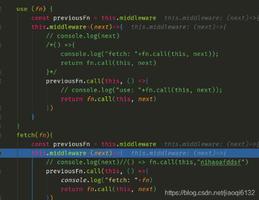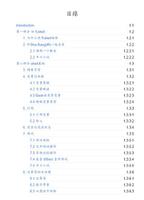Keras嵌入层中的mask_zero如何工作?
我认为mask_zero=True当输入值为0时将输出0,因此以下各层可能会跳过计算或其他操作。
如何mask_zero运作?
例:
data_in = np.array([ [1, 2, 0, 0]
])
data_in.shape
>>> (1, 4)
# model
x = Input(shape=(4,))
e = Embedding(5, 5, mask_zero=True)(x)
m = Model(inputs=x, outputs=e)
p = m.predict(data_in)
print(p.shape)
print(p)
实际输出为:(数字是随机的)
(1, 4, 5)[[[ 0.02499047 0.04617121 0.01586803 0.0338897 0.009652 ]
[ 0.04782704 -0.04035913 -0.0341589 0.03020919 -0.01157228]
[ 0.00451764 -0.01433611 0.02606953 0.00328832 0.02650392]
[ 0.00451764 -0.01433611 0.02606953 0.00328832 0.02650392]]]
但是,我认为输出将是:
[[[ 0.02499047 0.04617121 0.01586803 0.0338897 0.009652 ] [ 0.04782704 -0.04035913 -0.0341589 0.03020919 -0.01157228]
[ 0 0 0 0 0]
[ 0 0 0 0 0]]]
回答:
实际上,设置mask_zero=True嵌入层不会导致返回零向量。而是,嵌入层的行为不会改变,它将返回索引为零的嵌入向量。您可以通过检查Embedding层权重(即在您提到的示例中为m.layers[0].get_weights())来确认这一点。取而代之的是,它将影响诸如RNN层之类的后续层的行为。
如果检查Embedding层的源代码,则会看到一个称为的方法compute_mask:
def compute_mask(self, inputs, mask=None): if not self.mask_zero:
return None
output_mask = K.not_equal(inputs, 0)
return output_mask
此输出掩码将作为mask参数传递给支持掩码的以下层。这已经在__call__基本层的方法中实现了Layer:
# Handle mask propagation.previous_mask = _collect_previous_mask(inputs)
user_kwargs = copy.copy(kwargs)
if not is_all_none(previous_mask):
# The previous layer generated a mask.
if has_arg(self.call, 'mask'):
if 'mask' not in kwargs:
# If mask is explicitly passed to __call__,
# we should override the default mask.
kwargs['mask'] = previous_mask
这使得以下层可以忽略(即,在其计算中不考虑)此输入步骤。这是一个最小的示例:
data_in = np.array([ [1, 0, 2, 0]
])
x = Input(shape=(4,))
e = Embedding(5, 5, mask_zero=True)(x)
rnn = LSTM(3, return_sequences=True)(e)
m = Model(inputs=x, outputs=rnn)
m.predict(data_in)
array([[[-0.00084503, -0.00413611, 0.00049972],
[-0.00084503, -0.00413611, 0.00049972],
[-0.00144554, -0.00115775, -0.00293898],
[-0.00144554, -0.00115775, -0.00293898]]], dtype=float32)
如您所见,第二和第四时间步的LSTM层的输出分别与第一和第三时间步的输出相同。这意味着这些时间步骤已被掩盖。
在计算损耗时,还将考虑使用掩码,因为使用以下功能对损耗函数进行了内部增强以支持掩码weighted_masked_objective:
def weighted_masked_objective(fn): """Adds support for masking and sample-weighting to an objective function.
It transforms an objective function `fn(y_true, y_pred)`
into a sample-weighted, cost-masked objective function
`fn(y_true, y_pred, weights, mask)`.
# Arguments
fn: The objective function to wrap,
with signature `fn(y_true, y_pred)`.
# Returns
A function with signature `fn(y_true, y_pred, weights, mask)`.
"""
编译模型时:
weighted_losses = [weighted_masked_objective(fn) for fn in loss_functions]您可以使用以下示例对此进行验证:
data_in = np.array([[1, 2, 0, 0]])data_out = np.arange(12).reshape(1,4,3)
x = Input(shape=(4,))
e = Embedding(5, 5, mask_zero=True)(x)
d = Dense(3)(e)
m = Model(inputs=x, outputs=d)
m.compile(loss='mse', optimizer='adam')
preds = m.predict(data_in)
loss = m.evaluate(data_in, data_out, verbose=0)
print(preds)
print('Computed Loss:', loss)
[[[ 0.009682 0.02505393 -0.00632722]
[ 0.01756451 0.05928303 0.0153951 ]
[-0.00146054 -0.02064196 -0.04356086]
[-0.00146054 -0.02064196 -0.04356086]]]
Computed Loss: 9.041069030761719
# verify that only the first two outputs
# have been considered in the computation of loss
print(np.square(preds[0,0:2] - data_out[0,0:2]).mean())
9.041070036475277
以上是 Keras嵌入层中的mask_zero如何工作? 的全部内容, 来源链接: utcz.com/qa/429889.html






